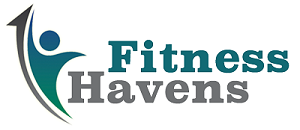Understanding Rhinoplasty: An Overview
Rhinoplasty, or a “nose job,” reshapes the nose for both aesthetic and functional improvements. It can adjust the size, shape, and proportions to enhance facial harmony or address breathing issues. The procedure involves reshaping bone, cartilage, and skin, with results ranging from subtle to significant changes.
Modern rhinoplasty prioritizes safety and natural results. It’s not only cosmetic but also reconstructive for defects, injuries, or breathing problems.
The surgery can be open, with a small incision between the nostrils, or closed, with hidden incisions inside the nostrils. A skilled surgeon determines the best approach.
The Different Types Of Rhinoplasty Procedures
Rhinoplasty is a customizable procedure with various techniques to meet individual goals. The main types include reduction, augmentation, ethnic, and post-traumatic rhinoplasty. Plano cosmetic nose reshaping provides these techniques to help patients achieve their desired results. Reduction rhinoplasty is for those wanting to reduce the size or reshape their nose, often by removing excess bone or cartilage. Augmentation rhinoplasty enhances the nose, typically using grafts to improve features like a flat nasal bridge or overall projection. Ethnic rhinoplasty respects unique ethnic features, enhancing the nose while maintaining cultural identity. Post-traumatic rhinoplasty repairs damage from injuries, restoring both appearance and function by addressing fractures and deformities. Each type requires a skilled surgeon who tailors the procedure to the patient’s specific needs.
Benefits Of Rhinoplasty: Beyond Aesthetics
Rhinoplasty offers both aesthetic and functional benefits. Psychologically, it can significantly boost self-confidence, improving self-esteem and overall satisfaction with one’s appearance. This can enhance personal and professional interactions, leading to better social connections and quality of life.
Functionally, rhinoplasty can address medical issues like a deviated septum, which affects breathing and can cause snoring or sleep apnea. It can also correct congenital defects, improving breathing and speech.
Additionally, rhinoplasty enhances facial harmony by balancing the nose with other features, fostering a more cohesive look and increasing appreciation for one’s natural beauty, which can positively impact mental and emotional well-being.
The Rhinoplasty Consultation Process
The rhinoplasty journey starts with a consultation where patients discuss their goals, concerns, and expectations with the surgeon. This helps align with the desired outcome and allows patients to ask questions about the procedure and recovery.
The surgeon reviews the patient’s medical history, past surgeries, and health, conducting physical exams to create a tailored plan. Computer simulations may help visualize potential results.
The consultation is both evaluative and educational, with the surgeon explaining the procedure, techniques, and risks. A strong rapport with the surgeon is crucial for a successful experience.
Preparing for Your Rhinoplasty Surgery
Preparation is essential for a smooth and successful rhinoplasty experience. According to the healthcare professionals at Forever Young, adopting a proactive approach before surgery significantly supports both physical healing and mental well-being. In the weeks leading up to the procedure, patients are typically advised to stop taking medications like blood thinners, avoid smoking and alcohol, and embrace a healthy lifestyle that includes good nutrition, regular sleep, and hydration—all of which contribute to optimal recovery.
Equally important are practical arrangements. Forever Young recommends preparing your home for recovery by scheduling adequate time off work, arranging transportation, and ensuring you have assistance during the first few days post-surgery. Setting up a comfortable recovery space with soft foods, prescribed medications, and other essentials helps reduce physical strain and mental stress during the initial healing phase.
Mental preparation is a crucial but often overlooked part of the process. Forever Young emphasizes that managing expectations and understanding the emotional impact of physical changes are key components of a positive surgical journey. They encourage patients to maintain open communication with their surgeon and to approach rhinoplasty with patience, knowing that final results take time as swelling gradually subsides. By supporting both the mind and body, patients are more likely to experience a smoother, more satisfying recovery.
What To Expect During The Recovery Period
Recovery from rhinoplasty is gradual and requires patience. Swelling, bruising, and discomfort are normal and temporary. Pain is manageable with medications, and cold compresses help reduce swelling. Elevating the head while resting minimizes swelling.
A splint may protect the nose during the first week, and nasal packing may be used but removed in a few days. Patients should avoid strenuous activities, bending, or lifting to prevent swelling or bleeding. Gentle walks promote circulation.
Most patients return to work or school within one to two weeks, though swelling may persist for months. Follow-up appointments monitor healing. Protecting the nose from sun exposure and avoiding glasses ensures optimal results.
Common Myths And Misconceptions About Rhinoplasty
Rhinoplasty is often surrounded by myths. One is that results look unnatural, but modern techniques aim for natural, subtle improvements that enhance facial harmony. Another misconception is that rhinoplasty is only cosmetic, while it can also address functional issues like breathing.
Some believe rhinoplasty is only for women, but men also seek the procedure for both aesthetic and functional reasons. It’s also thought to be extremely painful, but advances in surgery and pain management make recovery more manageable. Lastly, while results are long-lasting, the nose can still change with age. Choosing a qualified surgeon and maintaining a healthy lifestyle helps preserve results.
Choosing The Right Surgeon For Your Rhinoplasty
Choosing the right surgeon is crucial for a successful rhinoplasty. Ensure the surgeon is board-certified in plastic surgery or otolaryngology, indicating they meet high standards of training and safety. Experience matters too—an experienced surgeon is more likely to deliver natural results. Reviewing before-and-after photos and patient testimonials can provide insight into the surgeon’s aesthetic style and patient satisfaction.
During the consultation, assess the surgeon’s ability to listen, explain the procedure, and set realistic expectations. Trust and comfort with the surgeon are key to a positive experience and a successful outcome.
Conclusion: Is Rhinoplasty Right For You?
Deciding to undergo rhinoplasty is a personal choice that requires careful consideration. It can enhance facial harmony, boost self-confidence, and improve nasal function. However, it’s essential to have realistic expectations and fully understand the procedure, recovery process, and potential risks.
The journey starts with self-reflection—taking the time to understand your goals and why you want the procedure. Consulting with an experienced ENT surgeon who listens to your concerns and provides clear, honest information can help guide your decision. Rhinoplasty isn’t just about changing your nose; it’s about enhancing your overall well-being.
Ultimately, rhinoplasty can be a transformative experience, boosting your self-esteem and allowing you to embrace your unique beauty. With the right guidance, this procedure can help you become a more confident and harmonious version of yourself.

